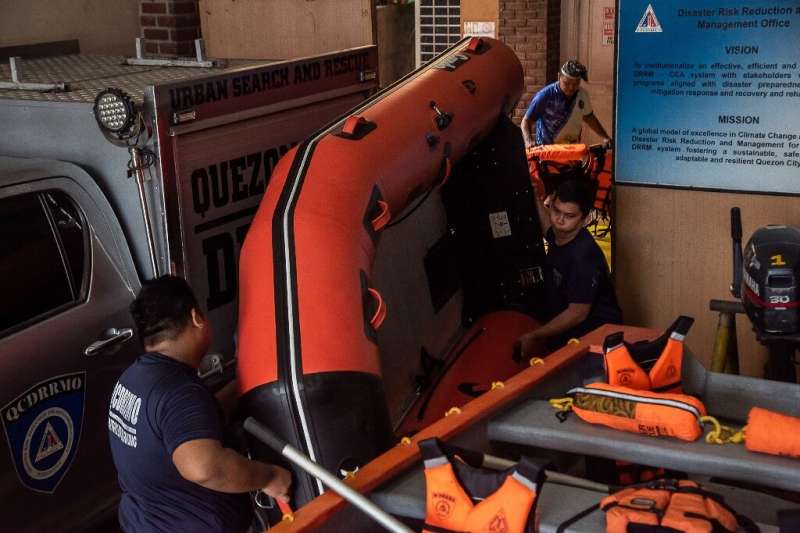Super Typhoon Noru barrels towards Philippines

A super typhoon charged towards the Philippines Sunday and was on track to slam into the heavily populated main island of Luzon, forcing the evacuations of vulnerable communities on the coast and in Manila, authorities said.
Super Typhoon Noru was packing maximum sustained winds of 195 kilometers (121 miles) an hour after an unprecedented "explosive intensification", the state weather forecaster said.
The storm, the strongest to hit the Philippines this year, is expected to continue strengthening as it makes landfall around 80 kilometers northeast of the sprawling capital Manila in the afternoon or evening.
"We ask residents living in danger zones to adhere to calls for evacuation whenever necessary," Philippine National Police chief General Rodolfo Azurin said.
The Philippines is regularly ravaged by storms, with scientists warning they are becoming more powerful as the world gets warmer because of climate change.
"The winds were fierce this morning," said Ernesto Portillo, 30, who works as a cook in the coastal municipality of Infanta in Quezon province where the typhoon could make landfall.
"We're a bit worried... We secured our belongings and bought a few groceries so we have food just in case."
Weather forecaster Robb Gile said Noru's rapid intensification as it neared land was "unprecedented". The meteorology agency said its wind speeds had increased by 90 kilometers per hour in 24 hours.
"Typhoons are like engines—you need a fuel and an exhaust to function," said Gile.
"In the case of Karding, it has a good fuel because it has plenty of warm waters along its track and then there is a good exhaust in the upper level of the atmosphere—so it's a good recipe for explosive intensification," he said, using the local name for the storm.
In Manila, emergency personnel braced for the possibility of strong winds and heavy rain battering the city of more than 13 million people.
Forced evacuations have started in some "high risk" areas of the metropolis, officials said.
"NCR is prepared. We are just waiting and hoping it will not hit us," said Romulo Cabantac, regional director for the civil defense office, referring to the National Capital Region.
Calm before the storm
Noru comes nine months after another super typhoon devastated swathes of the country, killing more than 400 people and leaving hundreds of thousands homeless.
Ahead of the latest storm, residents in several municipalities in Quezon province were evacuated from their homes, according to the provincial disaster office.
In the neighboring province of Aurora, residents of Dingalan municipality were forced to seek shelter.
"People living near the coast have been told to evacuate. We live away from the coast so we're staying put so far. We're more worried about the water from the mountains," said Rhea Tan, 54, a restaurant manager in Dingalan.
Tan said residents were securing the roofs of their houses and boats were being taken to higher ground while the weather was still calm.
"We're even more anxious if the weather is very calm, because that's the usual indicator of a strong typhoon before it hits land," Tan added.
Noru could have wind speeds of up to 205 kilometers per hour when it makes landfall, the weather bureau said.
It is expected to weaken to a typhoon as it sweeps across central Luzon, before entering the South China Sea on Monday and heading towards Vietnam.
The weather bureau has warned of dangerous storm surges more than three meters high along the coast of Aurora and Quezon, including the Polillo islands, along with widespread flooding and landslides as the storm dumps heavy rain.
It could topple coconut and mango trees, and cause "severe losses" to rice and corn crops in the heavily agricultural region, while inundating villages.
The coast guard reported more than 2,500 people had been left stranded by ferry cancellations as vessels took shelter ahead of the storm. Dozens of flights in and out of Manila were also cancelled.
School classes and non-essential government services have been suspended for Monday.
The Philippines—ranked among the most vulnerable nations to the impacts of climate change—is hit by an average of 20 storms every year.
© 2022 AFP




















